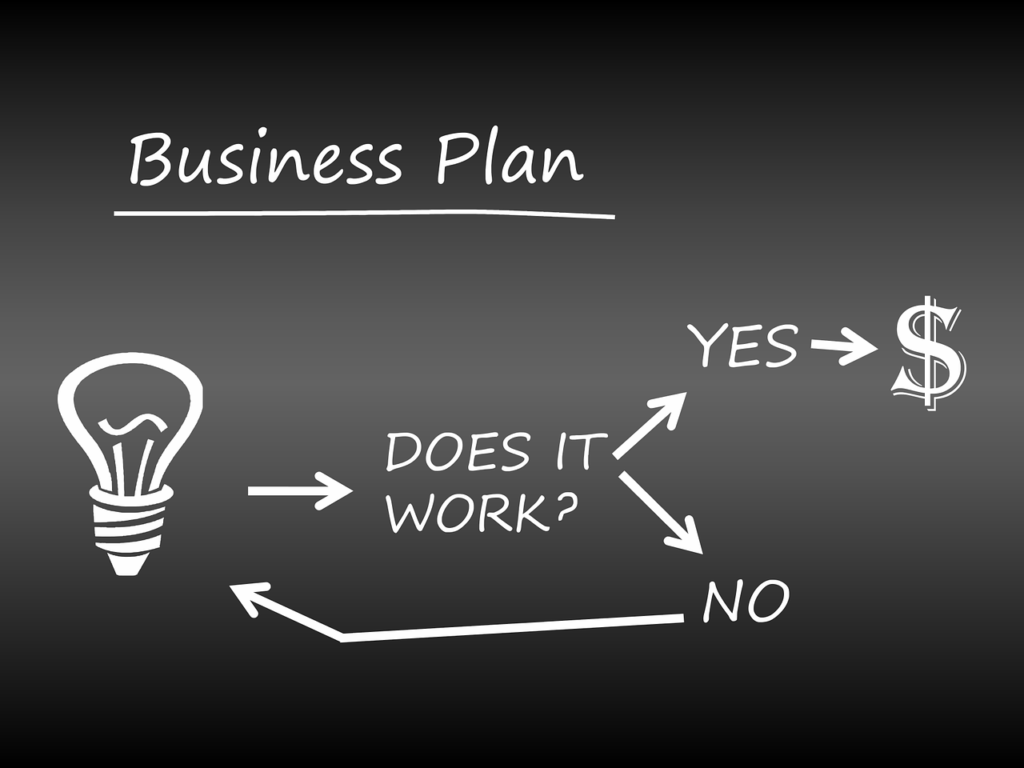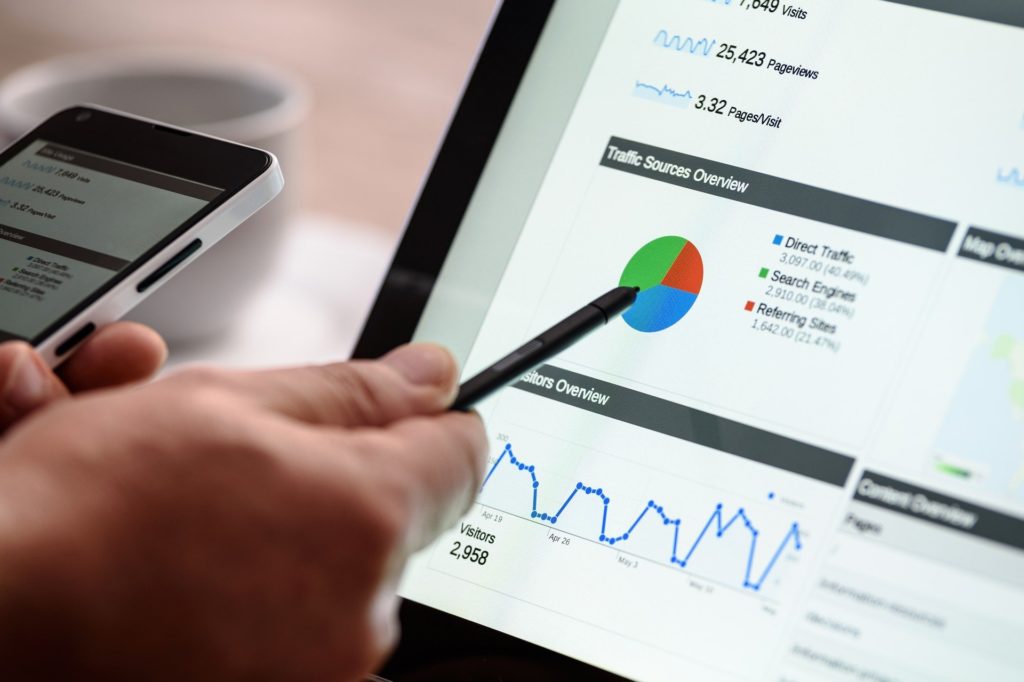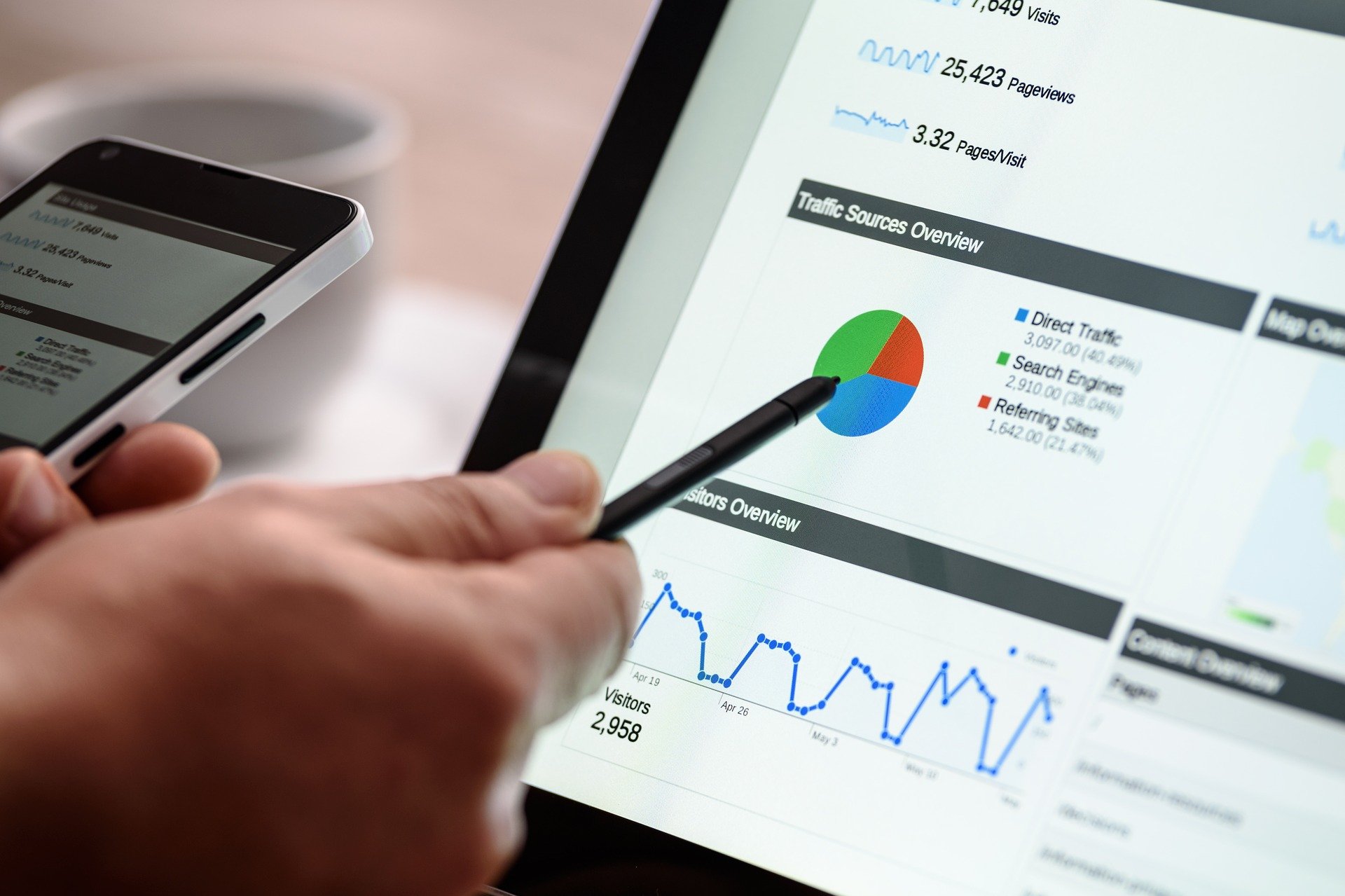15 Essential KPI Examples For Your Business
Businesses must set clear goals that will help managers mobilize resources and motivate employees. But how do you know if you are on course to meet your targets? You can describe your objectives in quantifiable, short term-goals that track your firm’s progress and indicate either success or failure. KPIs will let you know whether you are on track to meet your goals and include some KPI examples to get you started.

What are KPIs?
A Key Performance Indicator (KPI) is a quantifiable measure that indicates how effectively a business is meeting key business goals. Companies use KPIs at multiple levels to mobilize employees towards specific objectives.
For example, your company may intend to increase revenue by 30%. You can use high-level KPIs to track your establishment’s overall success and low-level KPIs to measure progress in individual departments.
KPIs ensure that every department and individual in your company has an actionable plan that contributes to the overall goal. Your employees will be grounded in data, and they should take continuous steps to improve business operations.
What Makes a Good KPI?
Poor KPIs are prevalent in business, mainly because managers measure things that are not relevant to their operations. It is also easy to get overwhelmed from measuring too many KPIs and end up with a lot of information that does little to advance your targets. Therefore, you should also avoid measuring the same metrics as everyone else and focus on the measures that affect your business. When choosing which KPI to use, keep the following tips in mind:
1. Measurable
This characteristic is perhaps the most critical indicator of a useful KPI. Avoid generalized goals like “improvement in customer satisfaction” and focus on quantitative and qualitative metrics. Instead, you can focus on “reducing support tickets by 20% in the next quarter.”
2. Actionable
A KPI is ineffective if it leaves your employees confused about the actions to take. The indicators should also be achievable, as setting unrealistic goals is one way to demotivate employees.
3. Relevant
Managers only need to measure what is important to their business. It would help if you only had a handful of key KPIs and several additional metrics to prevent employees from getting overwhelmed with too much information.
4. Simple and Specific
KPIs should shy away from abstract definitions and management jargon. Instead, it would be best if you drafted measures that are clear and easy to understand to help employee engagement with KPIs. It will also help clarify the input that is required from them. For example, you can mobilize the sales team to add 50 new customers in the coming month.
5. Aligned
Good KPIs trickle down from strategic goals to tactical and operational objectives. Therefore, all KPIs should support the overall targets of your business.
KPI Examples
We have identified some essential KPI examples as used by different departments and industries, including
Retail Industry
There is so much to keep track of in retail stores, from inventory management, visitor experience to supply chain management. If you are a retail manager, you can use KPIs to determine the areas that need more focus and improve your margins. For example, if you are grappling with low sales, you can draft KPIs for marketing and sales. Some retail KPI examples are:
A). Sales Per Square Foot
If you have a physical store, you should measure how effectively you are utilizing your space. By determining the sales per square foot, you will gain insights into store layouts and identify high-performing products. A store’s design has a tremendous impact on a consumer’s purchase decision, which is why you should measure the performance of your product arrangements. Simply divide your net sales by the physical space to arrive at your sales per square foot.
B). Conversion Rate
Every customer who visits your store represents a chance to make a sale and improve your profit. Therefore, you should keep track of how many visitors purchase your products after visiting your retail space. You can determine the conversion rate by dividing the total sales by the number of walk-ins. You can then set a KPI like: increase the conversion rate by 10% in the next half.
C). Sales Per Employee
Your employees represent your brand to customers, and they should be well-trained and effective at their job. Sales per employee is a simple way to determine if you are adequately-staffed and have a competent team on the sales floor.
You can determine this metric by dividing your net sales by the number of employees. If you have low sales per employee, you may need to train your staff or reduce the number of employees to discourage over-staffing.
Digital Marketing
Digital marketing teams rely on data to track metrics like returning visitors, lead conversion rates, SEO performance, and click-thru rates. The digital marketplace has become incredibly competitive, which is why you should keep track of essential measures to stay ahead of the competition. Some digital marketing KPIs to use include:

A). Cost Per Lead
It is easy to spend a lot of money on unsuccessful digital campaigns. You should measure the cost per lead to ensure that you invest the right amount and avoid substantial losses. To determine this metric, divide the money you have poured into a campaign by the number of generated leads.
B). Number of Unique and Returning Visitors
You should keep track of your website’s traffic using tools like Google Analytics to determine its performance. The number of website visitors will let you know how effective your marketing strategies are. After that, you can determine if the traffic originates from organic searches or paid ads.
You can also track the number of returning visitors to determine your content’s performance. If you have a high rate of returning visitors, you should focus on converting them into customers.
C). Bounce Rate
When visitors turn up at your landing page, they can either continue to browse or click away. The bounce rate determines how many visitors are quickly clicking away after visiting your website. This KPI can help you improve your landing page and boost retention rates and converted leads.
Social Media KPI Examples
Social media has provided excellent platforms like Instagram and LinkedIn for businesses to promote their products and brand. Additionally, social media can help you attract organic traffic and loyal customers who will further promote your products. If you are running social media campaigns, you will need to keep track of important metrics like:

A). Audience Growth Rate
You should track if your followers are increasing or decreasing to know when to improve your marketing strategies. To determine the audience growth rate, simply take the number of new followers, divide by your total followers, and multiply by 100.
B). Share of Voice
If you want to boost your brand’s engagement on social media, you need to generate meaningful buzz around your products. Share of voice is a simple measure that illustrates your brand awareness. Most importantly, this metric gives you an idea of your products’ level of recognition on social media platforms.
To determine your social share of voice, you will need to measure all mentions of your brands and those of your competition over a particular period. Add both mentions to get the total mentions in your industry. You can then divide your mentions by the total mentions and multiply by 100.
C). Engagement KPIs
You should keep constant track of your brand’s engagement if you intend to turn casual visitors into customers. Sometimes, businesses mistake having a large reach for high engagement. However, you can have many followers who are not enthusiasts of your products.
In addition to tracking clicks, likes, and shares, you should also measure the number of comments your content gets. You should strive to start exciting conversations as it means that your products have an impact. It also helps to track profile visits if you are on a social media platform that provides them.
eCommerce
If you have an eCommerce store, you need to track your online sales to determine your venture’s viability. KPIs can help you quantify operational and strategic values and guide you to make adjustments as needed. Below are a few of the essential eCommerce KPIs:
A). Conversion Rate
The conversion rate will tell you what percentage of visitors become buying customers or take action like creating an account. To arrive at the conversion rate, you will need to divide the total number of conversions by the total number of visitors.
It would help to compare your conversion rate with your industry’s average rate to gauge how you fare among your competitors. A low conversion rate can indicate that you are not targeting the right market or have an uninspiring call to action.
B). Customer Acquisition Cost (CAC)
It costs money to acquire customers, and no company wants to spend too much money on customer acquisition. For example, if you sell items at an average price of $150, you can’t afford to pay $100 to acquire each customer. On the other hand, if you sell home electronics at an average order value of $4000, you would fare well with a customer acquisition cost of $100.
To determine your customer acquisition cost, divide the amount of money invested in sales and marketing by the total number of customers those campaigns have delivered. This metric will help you plan your marketing budget more appropriately.
C). Net Promoter Score (NPS)
The net promoter score determines the willingness of a shopper to recommend your brand to another person. If your customers are likely to promote your brand to other social media users, you will likely boast of a high organic growth rate. To know where you stand, you should poll shoppers on how likely they are to promote your brand or products.
Customer Service Metrics
If your company deals with customers daily, you need to keep track of the customer experience. To simplify things, you can create a customer service KPI dashboard to process large amounts of real-time, customer-related data. Customer analytics software will help you track metrics like:
A). Customer Satisfaction Score (CSAT)
The CSAT score is among the most prevalent measures of customer satisfaction. To determine this metric, you will ask your customer a simple question like: How do you rate your satisfaction with the purchased product or service? Respondents can choose an answer from a scale of choices, say 1-5. Divide the number of customers who responded satisfied with the total number of surveyed respondents, and multiply the result by 100.
B). First Response Time
Customers are more encouraged to buy from brands that respond to their queries in the shortest time possible. Your customers will expect to engage an agent immediately, which is why you should analyze response rates.
Some companies are now outsourcing to chatbots that greet visitors and collect customer complaints. The chatbot can assure customers that your agents are working on their concerns to reduce the perceived response time.
C). Customer Retention Rate
This metric can help you gauge how you retain customers over a given time period. Your customer retention rate will illustrate how effective your customer retention strategies are at building brand loyalty. This metric is especially important for commerce companies who get over half of their business from returning customers.
How to Pick KPI Examples
It can be overwhelming to pick KPIs to focus on, and companies are often caught up in vanity metrics. In other words, you want to avoid fancy measures that do not accurately indicate your company’s performance.
In addition to ensuring that your chosen KPIs are specific and measurable, you need to choose explainable KPIs. That is, all stakeholders should easily understand the metrics.
It will be easier to choose KPIs if you have defined your business goals since you can weed out the measures that don’t align with your objectives. Once you start from the top, you can then describe the metrics in terms of departmental and individual input.
In Conclusion
KPIs are performance metrics that illustrate how well a company is meeting its objectives. If used right, these measures can help you analyze your company’s productivity and guide your operations. There are many KPIs and a lot of data to keep track of, and you only want to focus on a few important ones that drive your strategy. An excellent place to start is defining your overall company objectives and picking several KPIs to help you achieve them. This is followed by effectively communicating your chosen KPIs.



